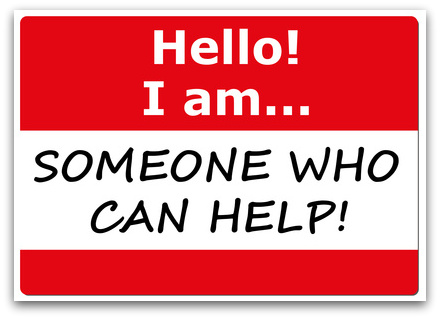Coaching Confidence Chatterbox with Jen Waller

Coaching Confidence Chatterbox with
Jen Waller
The Coaching Confidence Chatterbox is an interview feature with coaches where the questions are generated based on the origami fortune teller/chatterbox game.
As this is the first week, I thought as this is my site I’d join in and play first. 🙂
Name: Jen Waller
Website: www.CoachingConfidence.co.uk (this one!)

.
(The answers to the above questions are then used to generate a choice of numbers)
.
Select one of the following numbers 8, 1, 4 or 5: 5
“What is your favourite way that a client has found out about your work?“:
A lot of the clients I work with have either come to me as a referral or because they have already have experience/contact with my work – either through the written word or in person.
For example, I have had clients approach me to become their coach who I initially met at someone elses event and we did a coaching exercise together.
.
Select one of the following numbers 7, 2, 3 or 6: 6
“If you could travel back in time to give a message to yourself either at the start of your coaching journey, or earlier, what would that message be?”
For a long time I let fear and that voice of doubt and self criticism get in the way of actually coaching and being present with the other person.
So the first thing that springs to mind is to actually give her a big hug and tell her that everything will be OK. One day you will really see that the voice inside your head, the one that wants to give a running critique (the one you think is getting in the way), really doesn’t have to be important!
I know that at the time I was all about the destination and not so much about the journey – I doubt I’d have let myself get away without giving what I’d have viewed as a more practical answer.
So I’ll also add that you really don’t need to know all the questions you’re going to ask before the session – it works so much better if you respond to what your client actually says in that moment. Not what you imagined they may say or even where they were before the session!
Not knowing before the session what you are going to ask really does not reflect on your coaching skills – it just means that you’ve not learnt to time travel yet!
.
Select one of the following numbers 8, 1 or 4: 4
“What is the biggest lesson you’ve learnt so far as a coach?”
Oh so many to choose from – both from a coaching and a business perspective. I suspect that this is one of those questions where my answer will change from one week to the next!
If I had to just pick one today I would pick a coaching related one. It’s one where the language may get a bit more messy as it describes an experience – different people may use the same words in different contexts and to describe different experiences.
I think being totally present, focused and just “with” the other person is so powerful. It’s about listening without the purpose of fixing them, or using a specific pre-determined “technique” etc. It’s that space where if that voice of self doubt and criticism appears in my head it can go as quickly as it came – ‘cos it’s not about me in that moment, it’s about the other person.
When I’m in that flow it’s almost as if the questions, stories, quotes etc I share are coming from elsewhere. I’m not consciously having to think about any of that. Sometimes there’s a relaxed choice to make about a direction to head in but there’s an ease and naturalness about it all.
I love learning new things and I think certainly when I started out I would focus loads on the techniques, do lots and lots of language based drills, study different models and theories etc. I certainly undervalued the impact that being present environment can make – it seemed so simple and yet makes such a big difference.
.
What question would you like to add to the Chatterbox for another coach to answer?
What advice would you give to someone thinking of starting a coaching business?
.
How would you answer that question?
Two aspects immediately spring to mind:
- Firstly the easiest way is to get some practical experience both as a coach and as a client. See how you enjoy this before jumping headlong into setting up a full time business and then potentially discovering that what you thought in theory is nothing like the actual experience!
- Secondly, if you are wanting to “make a living” from coaching with your own business then there is the business aspects – it’s not just about coaching every working hour. That may seem obvious and it’s worth stating you don’t have to do all that single handed.
Having a support structure in place helps. How that support structure looks will vary from person to person – some will want support from an admin perspective, others with accounting, many love having someone to bounce ideas off or to talk about how to find clients etc.
It also really helps if you can make a difference with your clients so depending on your existing knowledge and background it may be that part of that support plan involves training and skill development.
One of the questions I’ve been known to ask people is to consider what their “dream” support would be? So if you had unlimited money/ time/ resources what would you put in place to make this easier and more fun?
Logistically unlimited money/ time / resources may not be your reality but I find that question often highlights surprising answers that many hadn’t considered exploring previously.
I’m on a mission to support, nurture and encourage coaching skills and talents from Non-Coach to Coach and Beyond, to find out more about me and my work visit here.
If you are a coach and want to play with the Coaching Confidence Chatterbox send an email via this page.

 If you are hooked in, then this person will keep coming back with issues for you to solve. If your advice is ever wrong they have their get out of jail free card – Mr X told me to do it.
If you are hooked in, then this person will keep coming back with issues for you to solve. If your advice is ever wrong they have their get out of jail free card – Mr X told me to do it.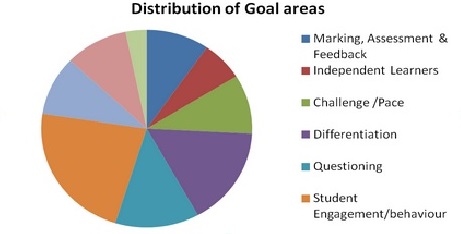
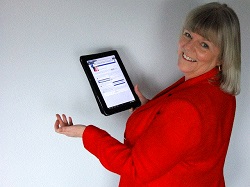 Amanda Clegg has been a science teacher in state secondary schools for almost thirty years. She was a member of a Senior Leadership team for 15 years before being asked to lead a private sixth form college through their initial ISI inspection. The college achieved an outstanding judgement. Amanda now works as an Educational and Coaching Consultant in Oxfordshire and Swindon. She is currently acting as temporary Head of Science two days a week in a local secondary school, as well as being an Associate trainer for Creative Education, co-author of a GCSE revision guide and an Associate Lecturer for UWE on the PGCE programme.
Amanda Clegg has been a science teacher in state secondary schools for almost thirty years. She was a member of a Senior Leadership team for 15 years before being asked to lead a private sixth form college through their initial ISI inspection. The college achieved an outstanding judgement. Amanda now works as an Educational and Coaching Consultant in Oxfordshire and Swindon. She is currently acting as temporary Head of Science two days a week in a local secondary school, as well as being an Associate trainer for Creative Education, co-author of a GCSE revision guide and an Associate Lecturer for UWE on the PGCE programme.
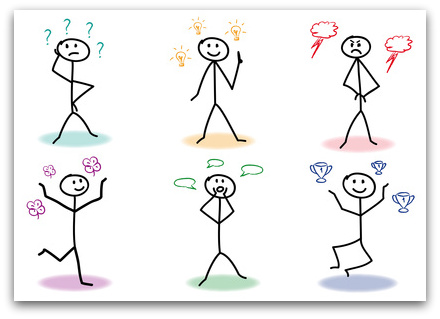

 Frederique Murphy is a mindset strategist, who specialises in the areas of Inspirational Strategy, Leadership, Communication, Change, Impact, and Achievement. Thanks to her Mountain Moving Mindset platform, Frederique provides individuals, corporate executives, and entrepreneurs with a wealth of mindset resources to help them strategise with vision, design with clarity, plan with focus, and lead with momentum. She shares her M3 Power through her transformational range of innovative products, coaching services, #1 Amazon Best Seller book, award-winning blog, articles and newsletters, unforgettable talks and life-changing events. She believes in guiding her clients through unforgettable journeys towards their own true wealth as they become the true leaders of their life, career and business. For more information on Frederique’s transformational range, visit
Frederique Murphy is a mindset strategist, who specialises in the areas of Inspirational Strategy, Leadership, Communication, Change, Impact, and Achievement. Thanks to her Mountain Moving Mindset platform, Frederique provides individuals, corporate executives, and entrepreneurs with a wealth of mindset resources to help them strategise with vision, design with clarity, plan with focus, and lead with momentum. She shares her M3 Power through her transformational range of innovative products, coaching services, #1 Amazon Best Seller book, award-winning blog, articles and newsletters, unforgettable talks and life-changing events. She believes in guiding her clients through unforgettable journeys towards their own true wealth as they become the true leaders of their life, career and business. For more information on Frederique’s transformational range, visit 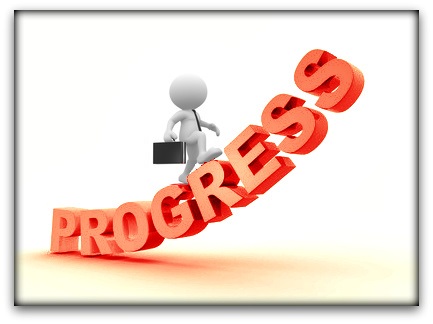
 Online Business Development Strategist, Tracey Lawton, teaches life coaches, business coaches, and virtual assistants how to become more organized, streamlined, and automated so that they don’t constantly bottleneck projects and processes. Having the right systems in place leads to consistent revenues, more clients, and less stress and overwhelm. Find out if you have the right systems in place for your business with the free quiz, “Is Your Business Set Up To Fail?” at http://bizsuccessquiz.com
Online Business Development Strategist, Tracey Lawton, teaches life coaches, business coaches, and virtual assistants how to become more organized, streamlined, and automated so that they don’t constantly bottleneck projects and processes. Having the right systems in place leads to consistent revenues, more clients, and less stress and overwhelm. Find out if you have the right systems in place for your business with the free quiz, “Is Your Business Set Up To Fail?” at http://bizsuccessquiz.com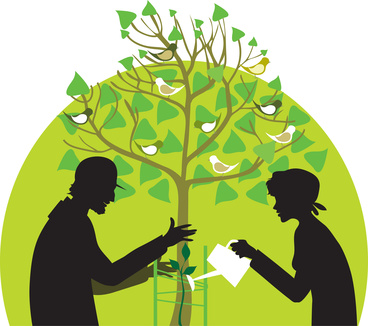
 Ben Morton is a Leadership Consultant at
Ben Morton is a Leadership Consultant at 